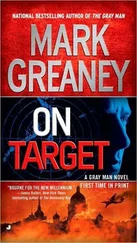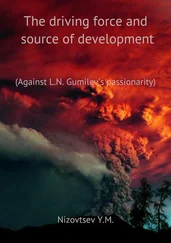Even though North Korea was known as being a nation cut off from the rest of the world, its intelligence was, in fact, uniquely well positioned for a conspiracy on a global scale. Ri personally worked with top agents of many regimes, either buying or selling weapons and sending his officers and agents into other nations to train their officers and agents in the art of enhanced interrogation techniques.
And the RGB was also deeply involved with most all of the major criminal syndicates in the world. They made millions of dollars every year in the drug trade producing and selling methamphetamine, mostly to European crime families or Mexican drug cartels. They printed and trafficked counterfeit hard currency, and bought and sold illegal weapons of all classification.
Ri and his staff knew the players who could make Fire Axe a reality, there was no question that he could put an assassin with a network in the same place as the American President. But to do it with no comebacks on North Korea was another matter entirely.
Ri and his officers looked at all Ryan’s scheduled foreign travel over the next few months. He’d be in Europe on two separate trips. Once in Berlin at a trade conference, and once in Poland for another meeting of NATO leadership.
He would also be in Mexico City in two and a half weeks’ time for a two-day official visit, and later he would fly to Buenos Aires for two more days of meetings and travel.
Europe was an enticing possibility for the simple matter that relations between the United States and Russia were terrible at the moment. Ri knew the Russian president, Valeri Volodin, wanted Jack Ryan dead, and more important, he knew the Americans knew it. But fingering Russia would be all but impossible. Yes, he had contacts in Moscow, but mostly with small computer hacking organizations or with Rosoboronexport, the nation’s state-owned arms trader. He’d dealt in drugs with a Russian bratva , but he didn’t have the influence over them he needed to perpetrate such a crime.
Ri liked Mexico more. The timeline was short, but the atmospherics were perfect. Six months earlier one of the larger and more violent Mexican drug cartels lost its leader, Antonio Maldonado, in a shootout with Federal Police in Acapulco. The Guerrero-based Maldonado cartel had been reeling ever since, and now that the leader’s younger brother, Santiago Maldonado, had been put in charge they had shown themselves to be even more volatile, more reactionary, than before. It had been rumored at the time of the killing that the Mexican authorities had found Antonio Maldonado only through the technical help they received from a group of American military communications specialists. The unit, known informally as the Activity, had been instrumental in locating Colombian drug lord Pablo Escobar more than twenty years earlier, and they had been in and out of South America ever since pinch-hitting for friendly nations in the war on drugs. Neither the U.S. nor Mexico had acknowledged the fact American military advisers were on the ground in Acapulco when Antonio Maldonado was cut down in a fusillade of carbine fire, but his brother, the mercurial Santiago, had vowed revenge.
Ri contacted his non-official cover officers in Mexico who worked with the Maldonado cartel, and they confirmed they thought it likely he could be persuaded to support an assassination attempt on the American President. Santiago was a drug-addled, nihilistic maniac, according to Ri’s officers, and if Santiago harbored any concerns for his own self-preservation he didn’t show them. Moreover, he would have absolutely no qualms about sending his own cultlike followers to a slaughter if there was the chance to exact retribution for the man responsible for his brother’s death.
But the North Koreans quickly realized that although Maldonado had men and guns, his force was unskilled, and he had no way to assassinate the President of the United States.
General Ri decided that the Mexican cartel could, however, still play a crucial role in the operation, because Ri knew where to find the killer.
He looked to another piece of the puzzle after he fleshed out the idea he had relayed to the Dae Wonsu. The general himself spoke with a close confidant who formerly was the head of Syria’s General Security Directorate, but had gone into hiding in North Africa during the war. Ri let the man know he was looking for someone who could work independently and be involved in a high-level assassination. The Syrian did not ask about the target, since he knew Ri would not tell him. Instead, he accepted a finder’s fee to give Ri the contact information for a single bomb maker, a man who, so said the Syrian, was both abundantly talented and looking for a way out of his present circumstance.
Ri was surprised to see the contact was not Syrian himself. He was Iranian, but he worked independently of Tehran; in fact, he’d freelanced as a bomb maker for the last few years. Ri contacted the Syrian government and asked for the opportunity to hire the man for some training in North Korea. They were open to the idea, and they arranged a meeting.
Adel Zarif lived in a Syrian intelligence safe house in Damascus, the city in which the Iranian had been living for more than three years. There was a price on his head by both Hezbollah and the Free Syrian Army rebels, and rumors were he was on an American presidential kill list as well.
Hezbollah wanted him dead for leaving their fold and turning freelance, the FSA wanted him dead for killing hundreds of their fighters in the civil war, and American drones combed the world for him because of the years he spent in Iraq, training insurgents in his specialty.
The improvised explosive device.
Zarif disagreed with the term; to him there was nothing improvised about his explosive devices. He had studied electrical engineering in Tehran before becoming a Hezbollah operative; in the nineties he’d wired bombs for Hezbollah and built bomb vests for Palestinian terrorists in southern Lebanon. When the war came to Iraq he was already in the country, already working with the Shiite militias, and Hezbollah pulled him back home for further training and study of tactics to defeat American armor. He came up with ingenious low-tech ways to build and employ explosively formed penetrator weapons, a normally high-tech device that shapes metal projectiles by the blast of the explosive, sending them through steel like a knife through butter.
He destroyed his first American tank in 2005, and by 2007, a year in which 33,900 IED attacks took place against coalition forces in Iraq, Zarif had trained hundreds of bomb makers in his tactics.
He was moved to Afghanistan in 2011 by Hezbollah, and there he built his largest IED. He wired a two-thousand-pound bomb to a detonator and placed it in the back of a water truck. A martyr then drove it into Kandahar, and made it to within one hundred yards of a British base before he was shot dead by a sniper’s bullet. He then let go of the dead man’s switch, detonating the device and killing seventy-six, all but five of them local.
By the time of the Arab Spring and the civil wars throughout the region Zarif was in his late forties, and he was old enough to see he was being used as a tool by different sects, beliefs, tribes, and factions. He decided his only true allegiance was to himself, and he went freelance.
The Syrian government snatched him up, both to help their forces build booby traps in the cities they fled in order to escape the FSA and to take him off the market so that he did not fight against them. The relationship was transactional, he didn’t care for the Assad regime any more than he cared for the people he blew to bits with his IEDs. But soon he was with Assad’s 17th Division, wiring entire buildings to blow on trip wires and lining roads behind the division’s retreat with car bombs.
Читать дальше












